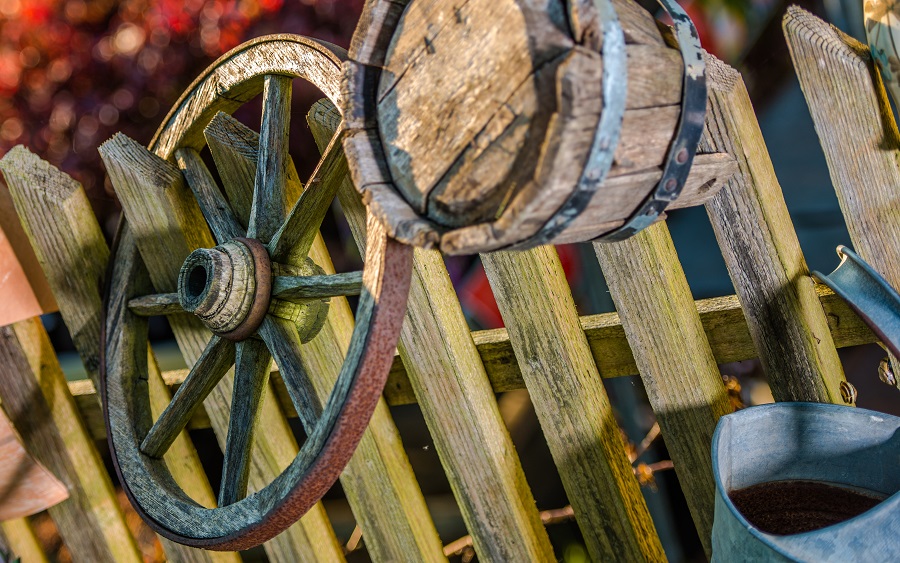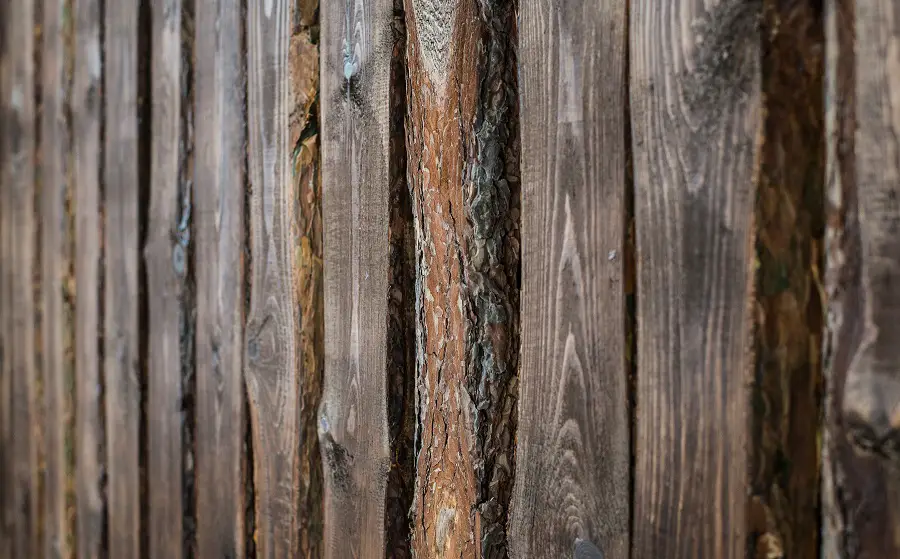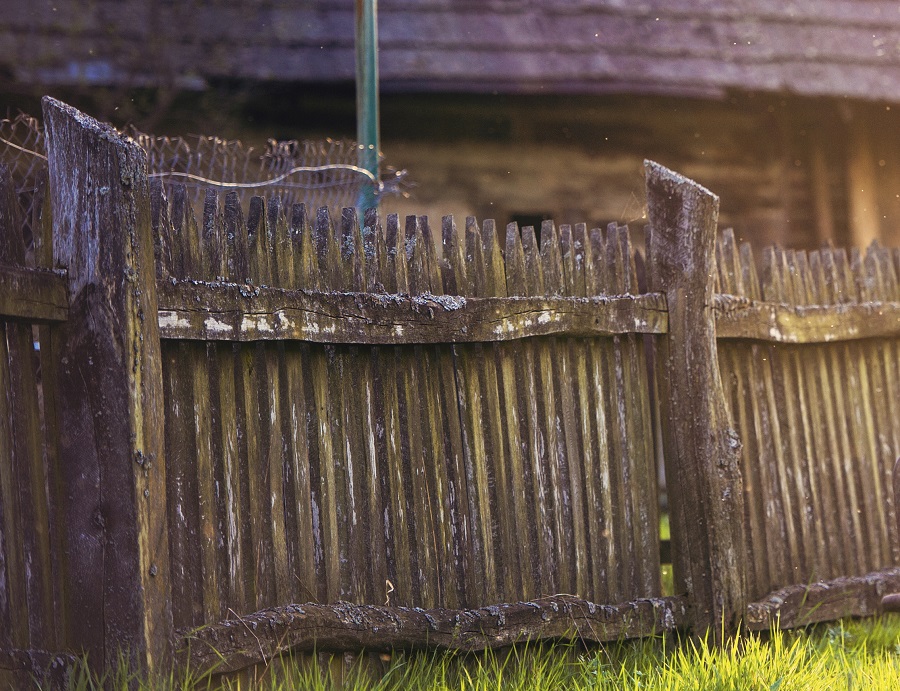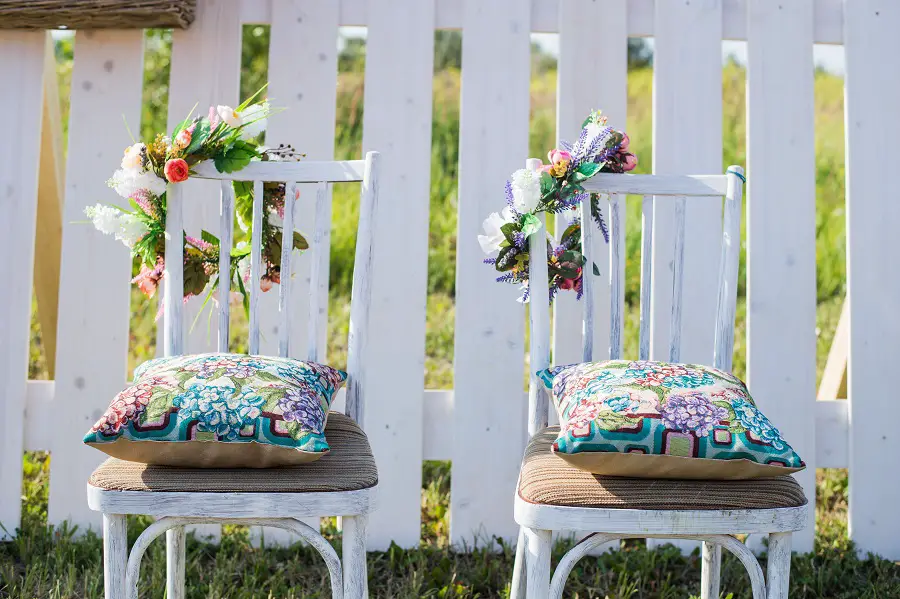I saw this question a few days ago on a carpenters' group and it was addressed to all colleagues in the group. Since then I've been thinking about the topic and have an answer, at least from my point of view. Originally I wanted to put it on the group, but the answer is longer and I can detail it better here.

Looking at the way things are done now compared to 40-50 years ago, at the household level, we discover differences right from the choice of wood species and the time of felling. In the past people built their own houses, the equipment and fences, having a "clacă" with relatives and neighbors. They sometimes had a "specialist" among them, a skilled craftsman from whom they listened to everyone and from whom they learned the secrets of the trade handed down from generation to generation. Being directly involved, they paid more attention to the behavior of wood under certain conditions, saw that some species were more resistant to outdoor conditions than others, and understood what they could do to make the wood last longer. The young man worked alongside his father, who had worked alongside his father. The knowledge was accumulated and passed on to his descendants and it was all based on observing the evolution of the work over time.
Choice of wood
The wood was not bought in stores, but trees were cut from the yard or from the forest on the property, or at most bought, still "standing" from a wealthier neighbor. They were felled only when they were needed, felling was done in late fall or early winter (late November, December, early January) when vegetation was minimal and the amount of water in the wood very low, and the oldest trees were chosen, never young trees because they knew they were less resistant. The young, growing tree has a porous structure designed to absorb as much water as possible. The porous structure remains after the tree is cut down. Water gets inside much more easily and stays there, perfect conditions for the wood to rot. This is why, when the trees in the yard were not old enough, they borrowed from neighbors or relatives, and would repay the debt when the trees on their property had grown old enough.
Each area had its favorite wood for such work, depending on what was growing nearby. In the mountains resinous, hills and plains, acacia, oak tree, the sparrow. Among the resinous trees, who had the lariță (larch) was rich. The wood was hard, strong and also good for houses. They didn't know much about resin or tannins in wood, but they knew that fences made with these species lasted longer. When trees were very scarce and therefore hard to find, they made fences out of woven wicker. In the Bărăgan, such fences were quite common.

Fence pattern and processing of its elements
They knew that water was bad for the wood, so they worked the fence elements so that the water would drain away and the wood would absorb as little as possible. The elements were rounded off at the top or cut at a sharp angle so that rainwater would not stagnate and would drain away as quickly as possible. They favored simple elements, but if they did cut out, the patterns were made in such a way that they didn't hold water. In regions where winter lasted longer, gates and fences were built with roofs. Planks were placed on the fence perpendicular to the vertical elements. In this way the snow did not stagnate on the end of the plank, where the absorption is higher, being the ends of the fibers.
The planks were cut parallel to the central axis of the tree, along the grain, and then gelled, i.e. worked by shaving (gelău/gealău - large-sized rhea). They made fine cuts parallel to the fiber with the knife of the planer, avoiding slicing it. Water absorption was reduced and the wood held much better.
Fitting the fence
The construction of the fence involves the supporting and resistance elements, i.e. the posts or bulumacs, the crosspieces that linked the posts together and the planks that were beaten on the crosspieces (called "cosași" in my grandparents' area). While less resistant species were sometimes chosen for the planks (for lack of hardwood), only those highly resistant to rotting were used for the posts. Burnt oil was applied to the poles before they were buried, and the earth was placed gently sloping around them to allow the water to drain off. Sand and stones brought in to drain the water were placed in the post holes. The reapers were sometimes laid at an angle to make the water slide more easily, or thicker branches that were not very straight were used.
The planks were not crammed together to let air circulate. The draughts quickly dried the rain-soaked boards and the fence stayed healthy. Also to let the air circulate, there were never any buildings attached to the fence. There was always a gap, however small, between the fence and the building next to it.

Finishing
In the past they weren't too bothered by the sun changing the color of the wood. The grey wood of fencesand of the houses and of the houses was common. It was only when it turned black that it was a problem because it meant it was mold. It was rubbed with a straw or wire brush, and the mold would clean off.
It was used to make it resistant to moisture linseed oil boiled or burned tractor oil. They sometimes used oil paint, but painting the fence was a luxury few could afford. Paint was saved for the wood of the house. As for the fence, they made sure that it was well built so that it would be strong even without extra protection.
They didn't always have access to oil, and to protect the wood they burned the planks superficially. The process prolonged the life of the fence, and when combined with brushing and oiling, the strength of the fence was greatly increased. Incidentally, wood burning as a means of exterior protection has been used since ancient times in many countries. The layer of charcoal formed on top protects the wood and prevents rotting.
I had the joy of spending all of my childhood vacations and most of my college vacations in the countryside. True, back then I didn't know how lucky I was, but now I appreciate my time there. I attended the claque for my cousin to build his house and watched my uncle and father build sheds, fences and other paraphernalia together. I was amazed at how much they could do and how everything they made was sturdy and good looking. Somewhere along this road to modernization, I lost a wealth of knowledge gained from experience, from long observation. It would be good if we were to move forward, on the normal path of progress, recovering the lost dowry. I think that would be a recipe for success.
I would be happy for those who have such experiences and know the secrets of the trade to share them with us. Maybe we can get our dowry back. And for those who are unclear or want to know more, leave your questions below in the dedicated space. Together we will try to find the answers.



































Very good article. Thank you!
I would also add that today's wood, regardless of its species, is less resistant because pollution attacks it throughout its life, just as it attacks us, humans. For these reasons, I don't believe that a piece of oak from 100 years ago has the same resistance as a piece of oak today. On the other hand, we also see a difference in the quality of the wood depending on the area of felling. Scandinavian wood (Finland) is not comparable to the same wood taken from just about anywhere in France, Germany or Romania. I am of course talking about the same wood species.
Thank you for your appreciation and for the additions.
All the best!
Hello Mrs Mihaela,
you have caressed my soul with your article. It was like hearing my father (deceased 26 years ago), who brought the fir trees from the mountains in winter, from which planks a foot wide were cut for the fence. And this fence lasted 60 years (rebuilt 25 years ago, but from the same planks).
Now we are going to make a new fence, and we are puzzled, where to get the dry plank, what shape to give it and what to treat it with to make it last at least half as long as the old one.
The fence is 40 m long, so it's quite an expensive investment. Now we are making a foundation out of bolts (?), we also want to make a covering. If you can give me some advice on treating and staining the wood before installation.
Thank you!
Hello!
I'm glad I brought back some pleasant memories.
The idea of making the fence foundation is very good. Problems occur most often exactly in the area at ground level where oxidation (air, UV radiation) and moisture (from rain and soil) come into play.
Oil is a very good solution for fences. The wood must be dry to absorb as much as possible. In order to last as long as possible it must be maintained. When that dry look of the wood appears, without the silky sheen of the oil, another coat should be applied. Moisture is what affects wood and oil is a very good weapon.
You can find out more about the resistance of fences in the link below.
All the best!
https://revistadinlemn.ro/2018/03/09/garduri-din-lemn-cum-se-alege-lemnul-materiale-de-protectie-sfaturi/
My grandfather was a carpenter. I've seen a lot of things done by his hand. I had the privilege of following him up the green hills around the house, and walking with him like this, he would talk to me about trees and their role.
I remember that when he was making fences, he would make a fire and burn the ends of the bulumaks that were sharpened beforehand to better fix them in the previously dug holes.
We simply witness the spell. They seemed like real rituals to me. I don't even need to tell you about the smell of the wood, of the wood left behind from the threshing floor from which we made our pugs and tied them in our hair... A world that has not completely disappeared in the country!
Thanks for the addition! Perhaps you will share more of these memories with us, it would be a shame to lose them. 🙂
All the best!
I was looking for some technical details, but it wasn't the subject that interested me. Then I couldn't stop reading. It's a good article, with technical details, written by a specialist, but it moved me. Maybe I'll put some of my newly acquired knowledge into practice. I'm glad you shared them with us and that they can be accessed at the right time. It's an article written from the heart, for the heart! Thank you!
Camelia
Thank you too!
All the best!
Hello Mrs Mihaela,
I would like to ask you if you could help me with some information about a wooden fence I am going to build.
Is beech a good choice for an outdoor fence or is resinous better?
Does the uluca have to be shaved all over? Can it be sanded only on the visible side or is it necessary to finish on both sides in order to eliminate the risk of damaging the wood by water infiltration on the unsanded side?
Can I use linseed oil for beech wood protection (if this is the best option) or do you recommend something else?
Thank you!
Hello!
Beech is not a good choice for outdoors, it has very low resistance to rot. In the link below you will find information about the qualities required of wood used outdoors. Softwoods are clearly the better choice.
Gelation is an operation that helps reduce water absorption. I recommend doing it on both sides.
For finishing the fence (resin) I think the best option is oil-based coloured lacquers. There are products on the market that give a very good resistance to moisture and UV radiation.
All the best!
https://revistadinlemn.ro/2019/06/12/cele-mai-rezistente-specii-de-lemn-la-exterior/
First of all thank you for your time in replying. I will take your advice and not purchase beech uluca.
I also have the option to buy the oak pitcher.
From what I've seen it is very good and it is Class 2 - durable wood. Life span: 15-25 years. The only drawback being the significantly higher price compared to the cheapest variant - softwood. But I still have time to think 🙂
As for the finishing of the fence, if I opt for the oak version, can I use directly the linseed oil if I don't want to stain the fence but keep the natural colour respectively the colour obtained after impregnation with linseed oil?
Thank you in advance for your kindness.
Good evening!
Totally transparent oil is not resistant to UV radiation. Usually 3-5% pigment (oil-based varnish) is put in the oil used for outdoor use. The oil remains transparent and becomes very little coloured. You can make your own varnish or buy it commercially. Below is a link that may help you.
All the best!
https://revistadinlemn.ro/2018/05/15/ulei-de-in-cand-unde-si-cum-se-foloseste-cum-sa-ti-faci-singur-vopsele-de-ulei/
Good evening.Thank you for your answer.I will use oil-based pigmented varnish.I finally purchased Douglas fir fence pickets. I have one more question... The wood is not dry...from what I noticed it looks really freshly cut. How long do I have to keep it dry - do I use the +1 year thickness formula? Can I give it a lacquering even without it being dried ? Does it keep in the sun stacked for drying or in the shade in rooms like attic/barn ?
Thank you very much for your answer.
Hello!
The oil-based varnish allows moisture exchange with the environment, so the wood can also be used with higher humidity. It is sufficient if 2-3 months have passed since felling. The wood will continue to exchange moisture with the environment until it reaches equilibrium, even after applying the varnish.
For drying it should be stacked with spaces between the boards (not one on top of the other, but with the boards between) and not kept directly in the sun. The most important thing is that air circulates. It can be kept under the eaves. In the shed or cellar it can only be kept if they are ventilated (air circulates permanently).
All the best!
Good evening! Of great interest the article, especially for a get beget from Oradea. I have planks left over from the formwork, resinous, I think. It's tempting a horizontal fence (). I understand that, being larger surface in contact with water, it would be less durable?
Thank you
Hello!
The main enemy of wood is water, so solutions must be found to remove it as quickly as possible. Laying the planks upright encourages drainage and prevents water from stagnating. When laying horizontally, water can stagnate more at the bottom of the board. A slightly sloping, not perfectly horizontal, installation can help drainage.
If water doesn't drain quickly, it can find its way into the wood and with it, micro-organisms. They are what cause wood to rot.
Water run-off is favoured by a good sanding of the wood and correct coating with finishing materials (varnishes, paints, lacquers).
I'm leaving below a link to an article about fencing, maybe it will help you.
All the best!
https://revistadinlemn.ro/2018/03/09/garduri-din-lemn-cum-se-alege-lemnul-materiale-de-protectie-sfaturi/
https://revistadinlemn.ro/2022/02/03/de-ce-este-atacat-lemnul-de-ciuperci-si-putrezeste-cum-identificam-lemnul-afectat-si-ce-facem-pentru-evitarea-degradarii-lui/
https://revistadinlemn.ro/2023/03/23/ricosarea-picaturilor-de-ploaie-poate-indeparta-finisajul-si-distruge-lemnul-ce-solutii-avem/
Hello Mrs Mihaela,
Thank you very much, I read the very useful information about wood types and paints.
I have a fence painted with Lazura Cerata Lucioasa, it was refreshed after 4 years in 2018, and in 20 2021 I brushed the half-rounded portions of the horizontal boards with the remaining paint.
on the half-round side of the horizontal planks, in some places there are some cracks and the wood has swelled a bit, can you cover it with something, can you use some kind of putty?
should it be glazed with 120 or 150 and applied all Lazura?
2. the horizontal planks are placed on the front and back, with space between them, and at the edges towards the concrete posts, they have some 1010x35x45mm slats in which they are fixed, and which have rotted, and I need to replace them.. I would try with 40x40x1000 mm rasioned slats, 1 cm smaller than the DIY store and I will paint them all with Lazura, then reassemble the planks and at the end fix them with bolts in the cement posts. Are there any other alternatives?
thanks for the tips and articles.
Hello!
1.Thermoplastic glues, the stick type. It should be noted that they resist very low temperatures and humidity, practically that they can be used outdoors. If the wood is swollen in places it is clear that it absorbs water. It should be sanded all over and covered again with lacquer. If you don't sand the wax on top it will hinder adhesion and in a short time it will have to be refinished again. You can use one grit, 120 or 150.
2.I can't figure out exactly how they will be caught. The idea is that the wood should not be in direct contact with the cement, air should circulate to shake it. If it's in direct contact with the cement the risk of there always being moisture is high and the wood will rot quickly. The wood must also be shaped in such a way that water does not accumulate, allowing it to run off. Cutting the planks at 45 gr at the ends also helps the water to drain away.